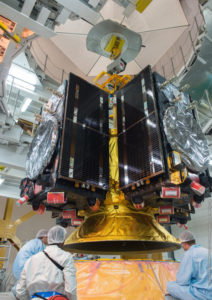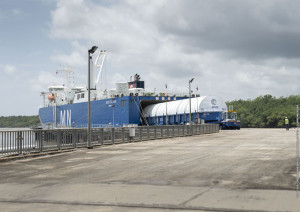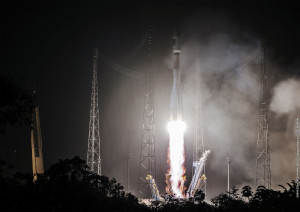
The completed Ariane 5 was transferred today atop its mobile launch table from the Final Assembly Building – where payload integration occurred – to the Spaceport’s dedicated ELA-3 launch complex, setting the stage for Arianespace’s ninth overall mission in 2016 across its full family of Ariane 5, Soyuz and Vega vehicles.
Designated Flight VA233 in the company’s numbering system, this upcoming Ariane 5 mission – set for Thursday, November 17 – will lift off at exactly 10:06:48 a.m. local time in French Guiana and deploy its quartet of Galileo spacecraft during a nearly four-hour flight.





